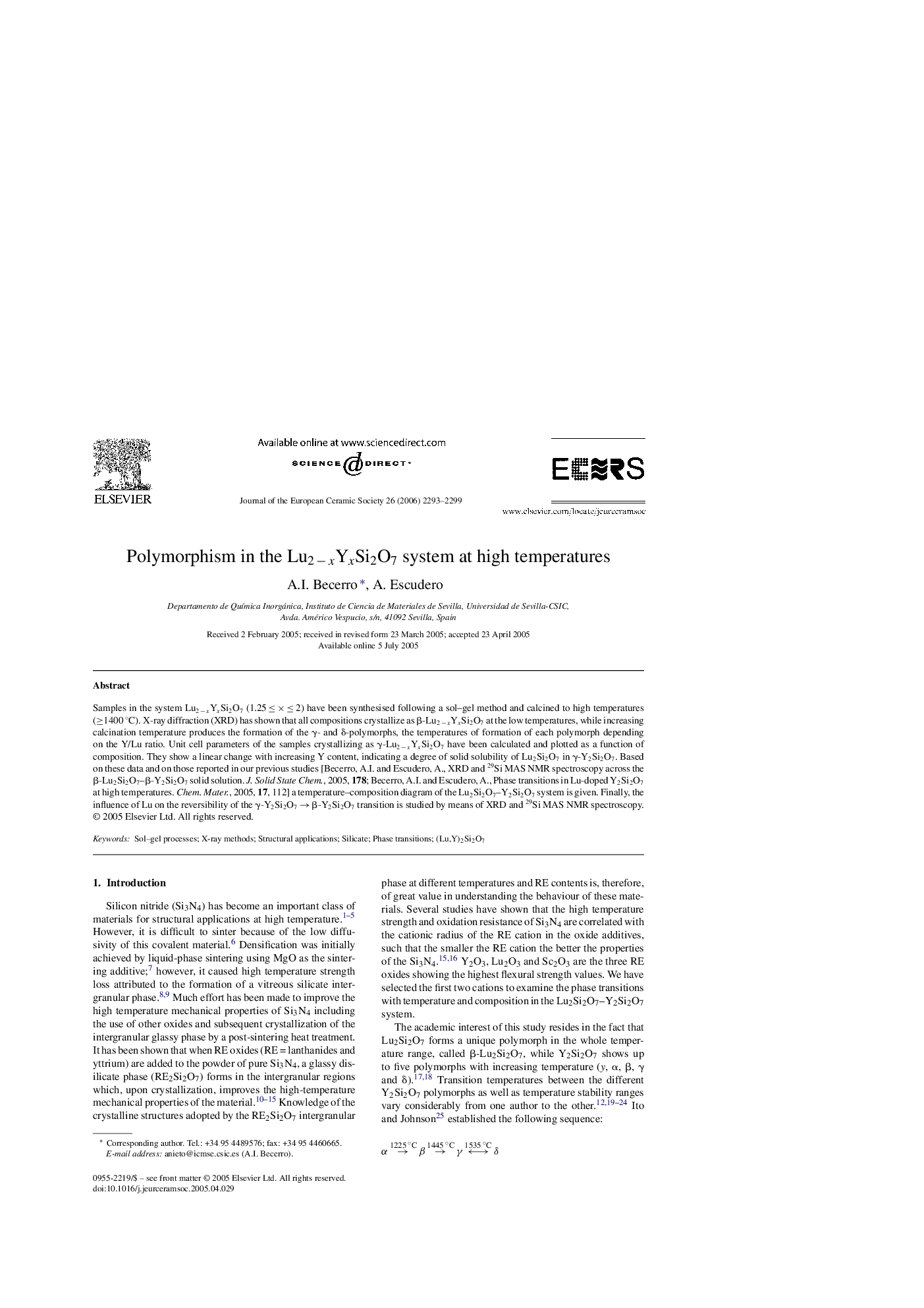| Article ID | Journal | Published Year | Pages | File Type |
|---|---|---|---|---|
| 1478698 | Journal of the European Ceramic Society | 2006 | 7 Pages |
Abstract
Samples in the system Lu2 â xYxSi2O7 (1.25 â¤Â àâ¤Â 2) have been synthesised following a sol-gel method and calcined to high temperatures (â¥1400 °C). X-ray diffraction (XRD) has shown that all compositions crystallize as β-Lu2 â xYxSi2O7 at the low temperatures, while increasing calcination temperature produces the formation of the γ- and δ-polymorphs, the temperatures of formation of each polymorph depending on the Y/Lu ratio. Unit cell parameters of the samples crystallizing as γ-Lu2 â xYxSi2O7 have been calculated and plotted as a function of composition. They show a linear change with increasing Y content, indicating a degree of solid solubility of Lu2Si2O7 in γ-Y2Si2O7. Based on these data and on those reported in our previous studies [Becerro, A.I. and Escudero, A., XRD and 29Si MAS NMR spectroscopy across the β-Lu2Si2O7-β-Y2Si2O7 solid solution. J. Solid State Chem., 2005, 178; Becerro, A.I. and Escudero, A., Phase transitions in Lu-doped Y2Si2O7 at high temperatures. Chem. Mater., 2005, 17, 112] a temperature-composition diagram of the Lu2Si2O7-Y2Si2O7 system is given. Finally, the influence of Lu on the reversibility of the γ-Y2Si2O7 â β-Y2Si2O7 transition is studied by means of XRD and 29Si MAS NMR spectroscopy.
Related Topics
Physical Sciences and Engineering
Materials Science
Ceramics and Composites
Authors
A.I. Becerro, A. Escudero,
